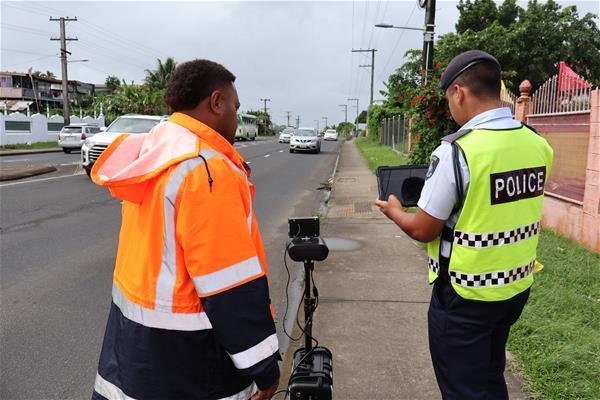Suva Fiji (13th October 2025): The Land Transport Authority (LTA) acknowledges recent discussions on social media regarding the visibility of its portable speed cameras and the manner in which these enforcement operations are conducted.
LTA Media Liaison Officer Geraldine Panapasa has reaffirmed that the Authority’s approach to speed enforcement — whether through visible or covert camera operations — is fully compliant, ethical, and consistent with global best practices aimed at saving lives.
“Drivers have a responsibility to obey the speed limit at all times — not only when they see a camera sign. Safe driving should be the norm, not the exception,” said Ms Panapasa.
Ms Panapasa clarified that portable speed cameras are strategically deployed based on safety data — focusing on high-risk corridors, school zones, and areas with frequent speeding-related crashes. The use of both overt and covert operations is designed to promote behavioural change among drivers, encouraging them to remain vigilant and compliant across the entire road network.
“Our goal is not to catch drivers off-guard, but to prevent dangerous behaviour that leads to deaths on our roads,” Ms Panapasa added.
She also noted growing instances of drivers sharing camera locations through social media and messaging groups, which has encouraged some motorists to only slow down temporarily.
“This practice defeats the purpose of road safety,” Ms Panapasa said.
“When drivers slow down only near known camera spots and then resume speeding, the risk to lives remains the same. For this reason, LTA has adopted more covert operations to ensure drivers understand that enforcement can occur anywhere, anytime — and that safe driving must be constant.”
As of 8th October 2025, Fiji has recorded 58 road fatalities, compared to 44 during the same period last year. Alarmingly, 35 of these deaths were caused by speeding. These figures underscore the urgent need for stronger deterrents and continuous driver education.
Ms Panapasa emphasised that speed cameras — fixed or portable — are life-saving tools that support LTA’s broader national strategy to make Fiji’s roads safer.
LTA will continue to collaborate closely with the Fiji Police Force and other road safety stakeholders to strengthen joint advocacy, education, and enforcement initiatives. These efforts aim to change driver attitudes, reduce road trauma, and protect every road user.
“We urge all Fijians to view speed enforcement not as punishment, but as protection,” Ms Panapasa said.
“Every life lost on our roads is one too many — and together, through responsibility and respect for the law, we can prevent these tragedies.”
The Authority is urging all motorists to take responsibility for their actions — slow down, stay alert, and drive safely.
